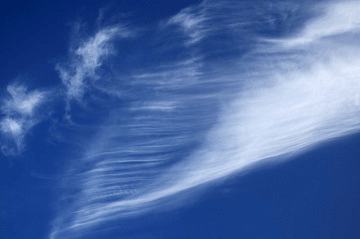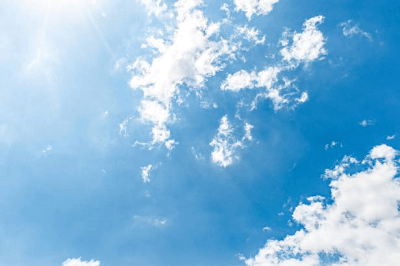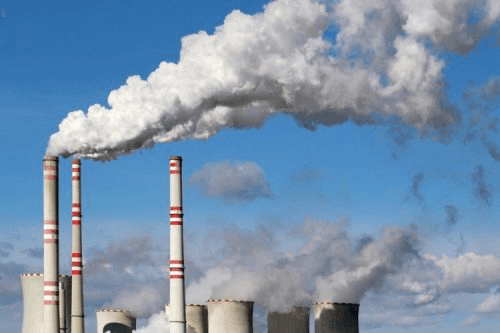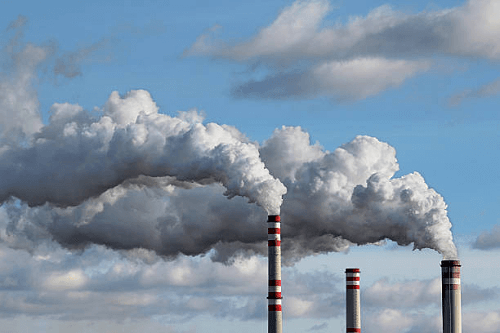Air Definition
Air is an intangible mixture of gases that engulfs the Earth, and some of the major gases include Nitrogen and Oxygen. The composition of Nitrogen is 78% and Oxygen 21%. Other gases include hydrogen, helium, argon, and carbon dioxide. Air is necessary for the survival of living organisms on Earth. It has a significant role in regulating the Earth's climate system and weather patterns. It also acts as a medium for sound and is requisite for the combustion process. The composition can differ based on composition and quality depending on human activity, altitude, and artificial activity.
Composition of the Air

The composition of the Air mainly consists of Nitrogen and Oxygen. Other gases are present in small amounts. The name of the gases and their composition is given below:
| Gases |
Composition |
| Oxygen |
21% |
| ONitrogen |
78% |
| OKrypton |
0.0001% |
| OHelium |
0.0005% |
| OHydrogen |
0.00005% |
| OXenon |
0.000009% |
| OArgon |
0.93% |
| ONeon |
0.0018% |
The presence of water vapor is also seen in the Air, but the concentration can differ based on humidity and Geographical location.
Properties of Air
Air has some significant properties that make it possible for living organisms to live. Some of the properties are:
- Mass: Air contains mass, which means it has weight and space.
- Transparent: It is transparent, which suggests that it does not reflect or absorb light.
- Conductivity: Air is a poor conductor of heat and electricity.
- Density: The Air's density reduces as altitude increases due to decreased pressure. Air density at sea level is 1.2 kg/
 (approximately). (approximately).
- Temperature: Its temperature can differ widely based on time, geography, and height.
- Composition: Air mainly comprises Nitrogen and Oxygen, and other gases are found in small amounts.
- Viscosity: It possesses low viscosity, which means it easily flows and, therefore, can be compressed and expanded.
Applications of Air

- Combustion: Air is very vital for combustion to take place. Oxygen from the Air reacts with a fuel source to generate heat and light. This application is used everywhere, such as in heating systems and power generation.
- Breathing: Humans and animals need to breathe. The presence of oxygen is necessary for the body so that it can function properly.
- Agriculture: Agriculture is necessary for the growth of the plant. Plants take carbon dioxide from the Air to generate energy via photosynthesis, and oxygen is emitted into the atmosphere as a by-product. Air circulation is also important for stopping plant disease and maintaining healthy growth.
- Industrial Process: Air is widely used in the process of Industrial processes, for example, Air powered conveyors. Compressed Air has a wide application, for example, as an energy source to power machines and equipment.
- Transportation: Air balloons, Propellant rockets, and lifting force in an airplane are prime examples of transportation applications.
- Pollination of Crops: Plants generate male gametes in the pollen grains. The transfer of pollen grains from the male flower to the female flower and mingled with female gametes is called pollination. With the help of Air, this process can take place in a distant place.
- Wind energy (Electricity): The wind can be used to produce electricity with the institution of turbines. Wind power helps in the rotation of the blade, and in turn, it produces electricity. The electricity produced is not polluting and can be used anywhere on Earth.
- Medium for the Sound: The sounds travel through the air medium. In the absence of Air, we cannot hear the vibrations. The sound vibration travels through a medium, and the Air acts as a medium.
- Air in the Water Cycle: Water Cycle is a phenomenon in which water from the Earth, seas, and oceans evaporates and forms a cloud due to the sun's heat. The Air cools down the cloud formed over the land and precipitates as rain. The rainwater falling on the Earth goes back to the sea and oceans. Therefore, as a result, the Air helps in the movement of the clouds and also allows them to precipitate as rain.
Air Cycle
The word "air cycle" can be interpreted in different ways and but some of the common ways are:
Air Cycle (Natural Processes): Regarding Earth's natural movement, the term air cycle refers to the constant exchange and movement of Air around the Earth. It also involves some processes, and it includes
- Evaporation
- Condensation
- Precipitation
- Wind patterns
- Air circulation
It constructs a complex system of air movements and water patterns. Hot Air rises at the equator and turns toward the poles, it cools down and sinks and then comes back to the equator in a continuous cycle called Headley Cells. It helps in the regulation of global weather patterns.
Air Cycle (Aviation): The word air cycle in aviation denotes the aircraft environment control system that controls the cabin's air quality, temperature, and humidity. This air control system uses a compressor to compress the external Air. After cooling, it expands with the help of an expansion turbine, and a heat exchanger is used to heat it. Dehumidified and cooled Air is then circulated in the cabin to maintain a comfortable environment for curing and passenger during flights.
Question: How does Air help in the process of the Water cycle?
Answer: Air plays a key role in forming the water cycle and remains until the end of the process. The water cycle, also known as the hydrological cycle, is responsible for maintaining an uninterrupted water supply to the Earth. The Air facilitates the process of the hydrological cycle in various ways:
- Evaporation: It turns liquid water into water vapor in the Earth's atmosphere, and Air plays a crucial role in the process. The Earth's surface gets heat from the sun's light energy leading to water evaporating from the lakes, oceans, and other water bodies. The water vapor rises into the atmosphere with the help of air movement, cools out there, and condenses into a cloud.
- Condensation: The process of turning water vapor into liquid water is called condensation. The moist Air rises and cools in the atmosphere, it loses its heat content, and molecules of the water come very near to each other, causing them to form small droplets of water, and they are merged to form clouds. Clouds are generally seen as condensed water vapor released into the Air.
- Precipitation: It is the process in which condensed water vapor falls on the surface of the Earth in the form of ice crystals, rain, snow, or hailstorm. Air aids in the construction of precipitation by permitting condensed ice crystals or droplets to fall back to the Earth's surface due to the Earth's gravity.
Air Pollution

"Air pollution" refers to the presence of pollutants or harmful substances in the Earth's atmosphere, which could damage humans, the economy, and the environment. The World Health Organisation also uses this definition for its purpose.
Causes of Air Pollution
Some of the causes of air pollution have been listed below, and they are:

- Fossil Fuels Burning: Using Natural gas, oil, and coal for energy production, cooking, and heating discharges pollutants such as Nitrogen oxides, carbon monoxides, and particulate matter.
- Industrial Emission: Primitive machines that are used in the powerplants and factories discharge a volume of air pollutants into the atmosphere, such as volatile organic compounds, sulfur dioxide, nitrogen dioxide, etc
- Transport Emission: Automobile that runs on petrol, diesel, and gasoline discharge pollutants such as Nitrogen oxides, suspended particulate matter, Carbon Monoxides, etc
- Deforestation and Forest Fires: Reckless and large-scale cutting of trees and frequent forest fires discharges voluminous amounts of smoke, GHGs (Green House Gases), and suspended particulate matter into the atmosphere.
- Household Waste-Burning Activities: Burning household waste in open areas, such as torching solid municipal or agricultural waste, will discharge harmful gas into the atmosphere.
- Natural Process: Natural activities like wildfires, volcanic eruptions, and storms also become leading factors in the causes of air pollution.
- Demolition and Construction Activities: Dust and emission released from the construction and demolition activities, for example, painting, sanding, and excavation, can add to the air pollution.
- Inclement Weather Patterns: Weather patterns like stagnant Air and temperature inversion can trap air pollutants near the surface, enhancing air pollution levels.
Impact of Air Pollution
- Human Health: The impact posed by air pollution on human health is serious and devastating, especially for vulnerable populations that include older people, children, and people having co-morbidities. Some respiratory diseases caused by air pollution are Asthma, chronic bronchitis, and other respiratory problems. The risk of cardiovascular diseases also increases, such as heart attack and stroke.
- Environmental Impact: Air pollution can have a determined impact on the environment. It can affect crops, forests, and vegetation and lead to biodiversity loss and low yield. It will also lead to acidification of soil, water bodies, and ecosystem, creating imbalance and affecting aquatic life. It expedites the process of climate change by increasing Green House Gas emissions in the atmosphere. It also changes the weather pattern and temperature of the region.
- Economic Loss: It destroys infrastructure, increases healthcare expenses, and damages property. It has a damaging effect on the monument, buildings, and structures, leading to an increase in maintenance and repair costs. Business houses may face environmental compliances that would affect their profitability and competitiveness.
- Social and Life Quality Impacts: It limits outdoor activities, diminishes the aesthetics of the naturally built environment, and reduces visibility. It will affect the marginalized communities disproportionately and expedite the process of social inequalities because these communities will be more exposed to pollution and will not have access to healthcare sources and mitigation measures.
- Climate Change: Air pollution significantly contributes to climate change by discharging gases like carbon dioxide, black carbon, and methane into the atmosphere. These gases can trap heat in the atmosphere, which could lead to global warming and changing weather patterns, ecosystems, and sea levels. It will severely impact human settlements, agriculture, natural ecosystems, water resource and food security, water availability, human migration, etc.
The impacts of air pollution are unlimited, and it is boundless. It impacts the everyday lives of people and has far-reaching consequences.
Curbing Air Pollution
Some of the methods that have been proposed to curb air pollution are:
- Conservation of Energy: Energy generated from fossil fuels is one of the main contributors to air pollution. Switching off lights and electronics not in use, turning to energy-efficient appliances, and lowering overall energy consumption can reduce air pollution by decreasing fossil fuel requirements.
- Reduce Transport Emissions: Automobiles that operate on fossil fuel are major sources of air pollution. Adoption of public transport, walking, biking, or carpooling techniques. Methods like properly inflated tires and regular automobile maintenance will help reduce emissions and increase fuel efficiency.
- Mass Scale Promotion of Renewable Energy: Endorsement of renewable sources of energy such as solar, hydro, and wind power can significantly reduce reliance on fossil for energy needs and help in a smooth green transition. Installation of solar panels will foster the initiatives of adoption of renewable energy and will voice for clean energy in society.
- Endorse Clean Air Policies, Programs, and Initiatives: Endorsing and advocating programs like vehicle emissions testing, emission standards, and air quality monitoring will strengthen the fight against air pollution.
- Conducting Awareness and Education Programs: Awareness programs should be conducted on the possible dangers of air pollution and its impact on public health.
- Observance of Proper Waste Management: Unbridled burning of wastes in the open area, such as agricultural waste and trash, is a major cause of air pollution. Waste management techniques like controlled waste disposal methods, composting, and recycling will reduce air pollution and minimize the discharge of harmful pollutants into the Air.
- Reduction in Industrial Emissions: Industries are considered a major source of air pollution. Observing stricter emission regulations, promoting and endorsing clean energy technologies, and fostering industries to adopt a cleaner method of production will aid in reducing industrial emissions and air pollution.
- Be Mindful of Personal Actions: Be cognisant of actions that could impact the air quality, avoid actions like burning wood or trash in the open, and adopt eco-friendly household items. All these actions will help in curbing air pollution.
|




 For Videos Join Our Youtube Channel: Join Now
For Videos Join Our Youtube Channel: Join Now




 (approximately).
(approximately).




